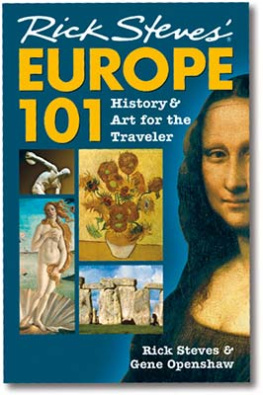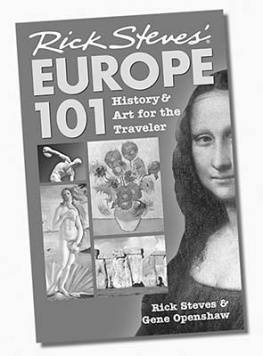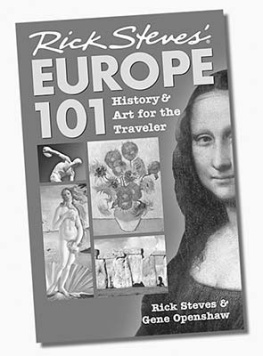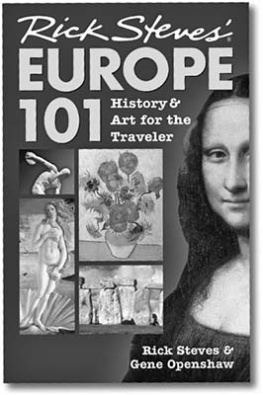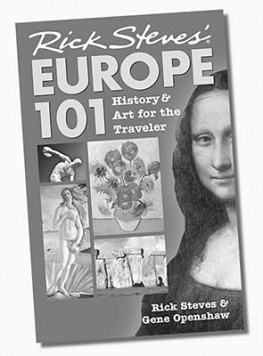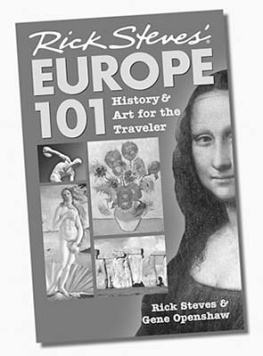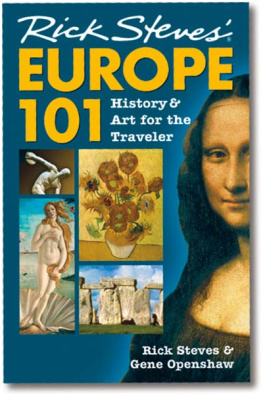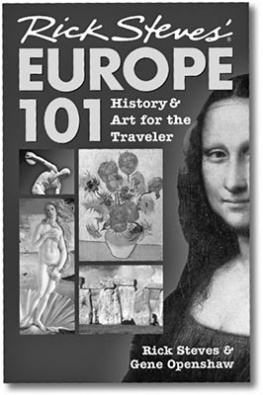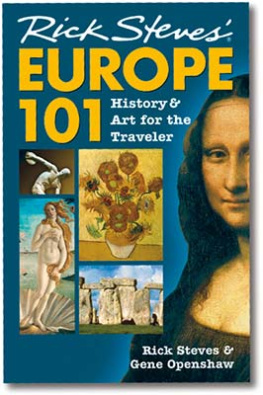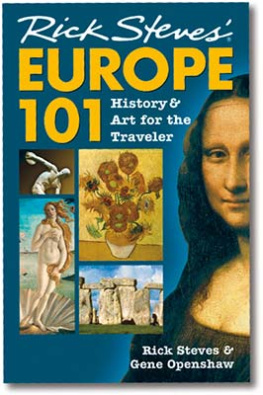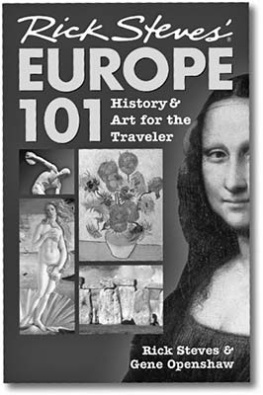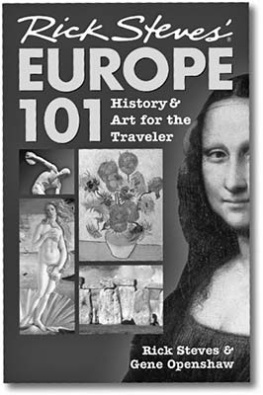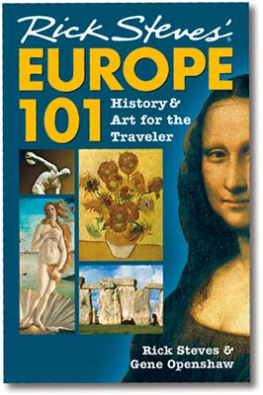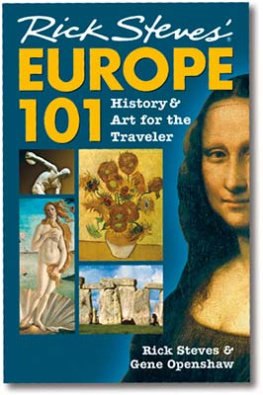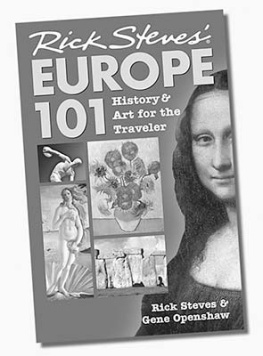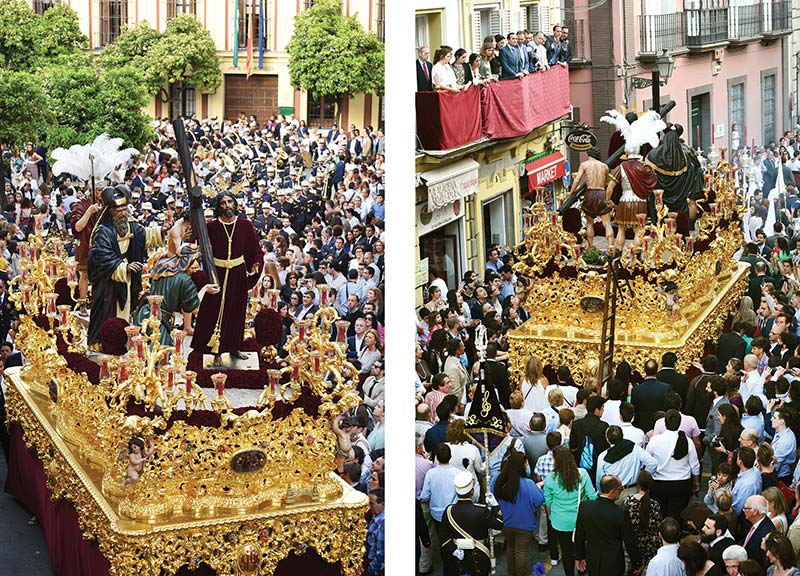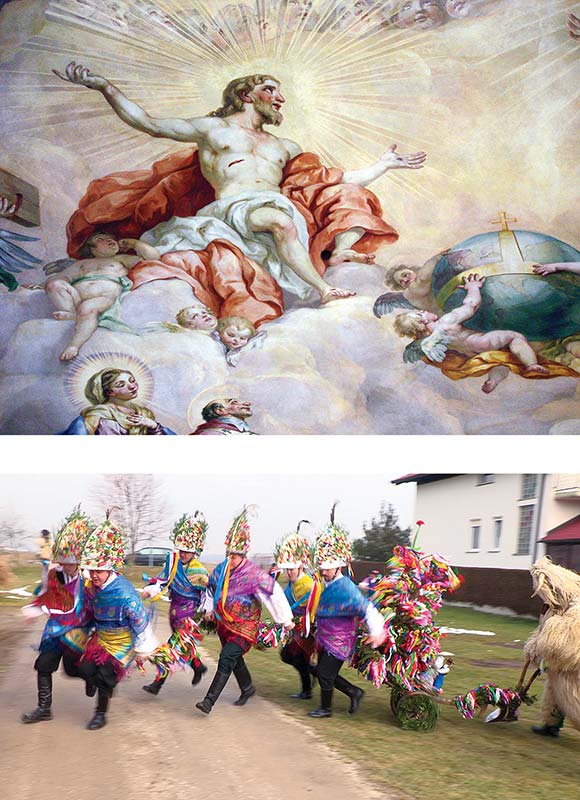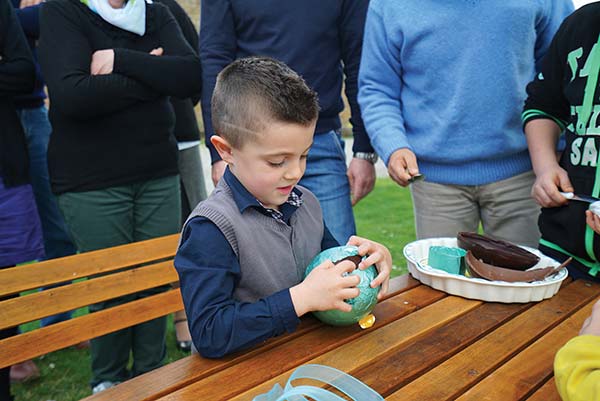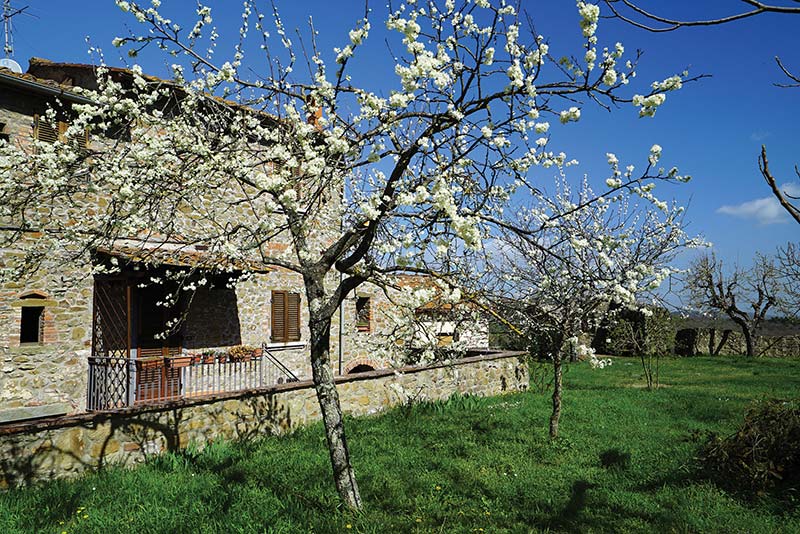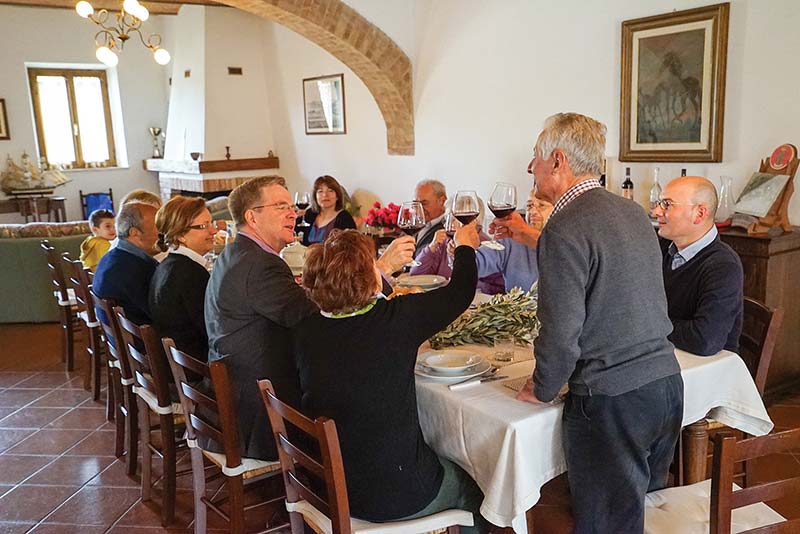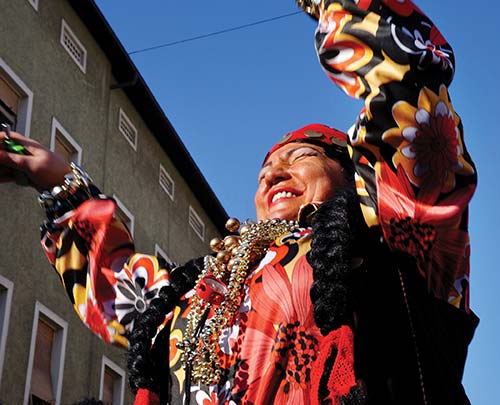Rick Steves
European Easter
Rick Steves and Gene Openshaw
EUROPE IS MY FAVORITE PLACE to travel, with its charming mix of people, history, and traditions. And Easter is a time when these rich traditions come to the forefront. Every country, every village, every family has its own way of observing the Easter seasonranging from religious to raucous, from fasting to feasting, from chocolate eggs to lamb-gut stew. These fascinating cultural differences make Easter a season of mystery, magic, and just plain fun.
For Christians, Easter celebrates the central Christian eventChrists suffering, Crucifixion, and Resurrection. This is the cornerstone of the Christian faith: that God gave his son to live on Earth among us to empathize with our mortal experience and share his Fathers message with us. The life of Jesus culminated on the cross, where he died to save humankind from sin and bring the gift of salvation. Then he was resurrected, showing the promise of eternal life. For that reason, Easter is the most sacred and thoughtfuland arguably most importantof Christian holidays. Its a time for quiet reflection and passionate ritual that swings from great sadness to great joy.
Festive, fragrant, and dramatic floats fill the streets of Sevilla during Holy Week.
The Easter season is a rich mix of Christian and pagan rituals. Sights range from art celebrating the Resurrection of Jesus to gaily dressed characters symbolically plowing the soil to welcome life returning to the fields each spring.
For students of history, Easter is an occasion to dig even deeper, to uncover the holidays prehistoric origins. Just as European churches sit on the remains of pagan temples, the Easter story is founded on the remnants of pagan festivals. These lusty pre-Christian celebrations were incorporated into the Christian tradition, and many live on even today.
For kids, its a time of magical fun, when adults take childrens visions of the supernatural seriously. There are gift-giving rabbits, mysteriously hidden eggs, delightfully messy art projects, and candy, candy, candy. Adults get into the spirit, remembering their own childhoods. Its when friends gather, grandma and grandpa come for dinner, and several generations can all enjoy specially-prepared foods, gifts, decorations, and precious time together.
With several generations gathered, this farm boy in Tuscany cracks open his chocolate egg, excited to discover a prize hiding inside.
Easter is an inherently joyous time, marking the end of winter and the arrival of spring. Its a time to celebrate a new start. Whether you believe in the Resurrection or just the return of flowers, sunshine, and the earths bounty, its the promise of new life.
Before we go further, Ive got a few important disclaimers: The reality is thatas in Americanot everyone in Europe makes a big deal of Easter. (Dont plan a special spring trip expecting to see festivities everywhere.) And as you read this book, youll hear about all kinds of Easter traditions and customs, both religious and secular. I treat all of these as equally valid. The non-religious might scoff at the Bible story about a man who really died and came back to life. But taken on faith, its a rich story that helps believers understand the greatest gift ever given. When it comes to Easter customs, historians might have a different take on the exact origin story of the Easter Bunny or in which century a particular hymn became popular, but Im writing more from a love of Easter than strict historical accuracy.
Whether you celebrate the Resurrection or just the return of flowers after a long and cold winter, Easter is a time to enjoy the promise of new life.
Be aware that many of the European traditions I feature are very local. Some are known only to a single village, or special only to a single family. Its hard to generalize about how all of Germany or all of Italy celebrates Easter. This book doesnt even try to do that. Instead, I focus on a few of the countries and customs I find most interesting. Many of my sources come from my travelswhen locals tell me about their celebrations, I pass it along to you. While researching this book, I learned that nobody really knows much of anything for sure about the misty origins and meanings of many legends associated with Easter. If youre the type of person who needs everything to be proven fact... youre probably not reading this book.
Now, as you anticipate the arrival of another Easter, sit back and enjoy this book. Well begin by traveling back in time to the origins of our Easter traditions. Then well travel through modern-day Europe, tracing the entire two-month-long celebration.
Well start with the craziness of Carnivalfrom the masked balls of Venice, to monsters on the rampage in Slovenia, to a musical Mardi Gras in Switzerland. This is followed by 40 days and 40 nights of sobriety and reflectionthe time known as Lent.
Easter is preceded by Lent40 days of sobriety and reflection. And Lent is preceded by the wildest party of the yearCarnival.
Easter is celebrated in many ways, but in every culture its a time for families and loved ones to be together.
Then Easter time really heats up when we reach the Holy Week that leads up to Easter Sunday. Well see thousands waving branches for Palm Sunday at the Vatican. Holy Week continues with special fervor in Spain, with all-night processions, passionate worship services, adoration of the Virgin Mary, and some provocative costumes.
Well see how people prepare for the big event, including the secular traditions that accompany Easterthat world of kids, chocolate eggs, and home-cooked dishes.
Finally, well experience the joy of Easter Sunday as various cultures across Europe celebrate the Resurrection of Jesus along with the return of springeach in their own way. Along the way, expect to find Easter customs that are both foreign and familiar, offering new and different ways to celebrate the joy of the holiday. Whether your Easter is about bunnies or Bible stories, revelry or the Resurrection, it is a wondrous time.
During Easter week, its hard not to get caught up in the moment.
Happy Easter!


